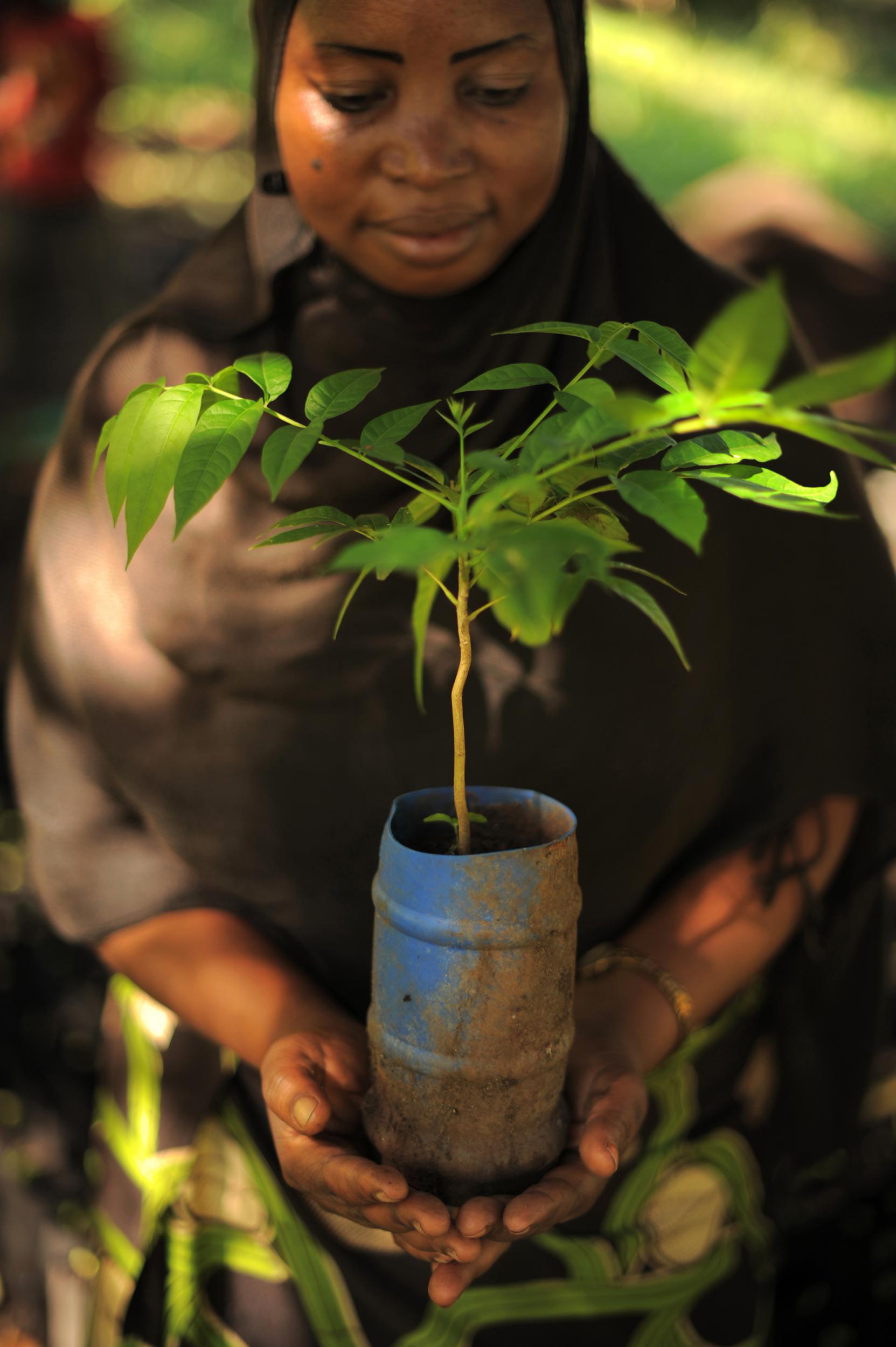
Agriculture is a leading cause of climate change, but it is also undeniably affected by it. Farming must therefore change in order to keep up with global demands, while reducing its environmental impact. Without these necessary changes, it’s estimated that by 2030, the impacts of climate change will be even worse, causing yields to decline so much that we will cancel out any progress we have made towards eliminating global hunger.
Some of those worst affected by climate change are small farms (those working on land under two hectares). There are around 475 million small farms around the world, cultivating around 12 per cent of the world’s farmed land. Those in the tropics and poorer agricultural communities will be particularly affected by climate change.
However, many of these small farms are increasingly using innovative ways to reduce greenhouse gas emissions and adapt to climate change. They are the true pioneers of climate-smart agriculture, using practices that maintain productivity while decreasing emissions. They are also producing a range of other benefits such as poverty alleviation, better nutrition and biodiversity conservation.
Sustainable but healthy yields
In the 20th century, farmers boosted yields by intensifying production: using more water, land, energy, synthetic pesticides and fertilisers. This model tended to assume that you couldn’t have high yields as well as environmental protection. Now, we understand that this is a false choice, and that sustainable intensification – producing healthy yields and higher incomes while building ecosystems on and around the farm – is possible. And it looks like small farms are leading the way in implementing such sustainable intensification around the world.
There are three steps towards sustainable intensification. These are increased efficiency (doing more with less), substitution (replacing ineffective or harmful products) and redesign (changing the whole farm to be more sustainable). These steps are not necessarily mutually exclusive.
For example, rice plants are typically planted close together in flooded nurseries. But they can also be grown in nutrient-rich nurseries that aren’t flooded – something that saves around 40 per cent of the water used compared to conventional production methods. However, the system is about more than simple resource efficiency – it actually involves a fundamental redesign of the whole system of rice production.
Substitution involves replacing less efficient or harmful inputs such as synthetic pesticides, which can be harmful for wildlife, with better alternatives. You can also replace old crop varieties with new ones that can withstand sudden changes, or which need less water – important for climate resilience. New varieties may also be able to help reduce agricultural emissions. For example, plants with greater root mass could help sequester an estimated 50 to 100 tonnes of carbon per hectare.

Radical approaches
Radical redesign of farms involves techniques such as conservation agriculture – practices that minimise the disruption of the soil’s structure and biodiversity. Integrated pest management, which involves strategies to deal with pests without posing risks to the environment, and agroforestry, using trees in agriculture, are also good examples. A recent assessment estimated that around 163 million farms worldwide (29 per cent of the global total) practice some form of redesign.
The evidence shows that these methods are already helping small farms achieve healthy yields while delivering a range of other benefits, including carbon sequestration, using less energy and synthetic inputs and climate resilience.
One example is the “push-pull integrated pest management”. Push-pull is a method of pest control that was developed in east Africa to help farmers deal with stemborers and strigaweeds, which attack crops such as maize. Instead of relying exclusively on synthetic pesticides, farmers grow pest-repelling plants such as desmodium (which push the pests away) in among the main crop. They also plant borders around their fields of other crops such as such as napier grass, which attracts pests (pull).
This keeps pests away from the main cereal crops, reducing losses. In recent years, push-pull systems have been adapted to include plants such as brachiaria, which can tolerate hotter and drier climates. Such systems are used across 69,000 small farms across Kenya, Uganda, Tanzania and Ethiopia.
Other methods of redesign are also being practised at scale by small farms in other places. In India, 140,000 farmers in Andhra Pradesh and an estimated 100,000 in Karnatakapractice “zero budget natural farming”. This is an initiative which promotes the natural growth of crops without adding any synthetic fertilisers and pesticides. In Africa, small farms in Burkina Faso and Niger have taken up agroforestry and soil and water conservation, and transformed the landscape of around 500,000 hectares of degraded land.
The redesign of agriculture offers the best chances for achieving lower carbon, climate-proof agriculture in the 21st century. But, it requires new partnerships between farmers, development agencies, governments and researchers. Farming is knowledge intensive, and will be increasingly so in a changing world. Sustainable intensification initiatives that have spread to scale have all involved new initiatives to support collaboration and learning. Farmer field schools, training programmes for local farmers, are key to this. So are plant breeding programmes in which participating farmers get opportunities to make decisions at different stages during the process.
Ultimately, climate proofing is best achieved by improving the sustainability of existing systems. Small farms already know what works. The challenge remains to help them spearhead the global spread of redesigned agriculture.
enior research fellow at Anglia Ruskin University. This article first appeared in The Conversation







